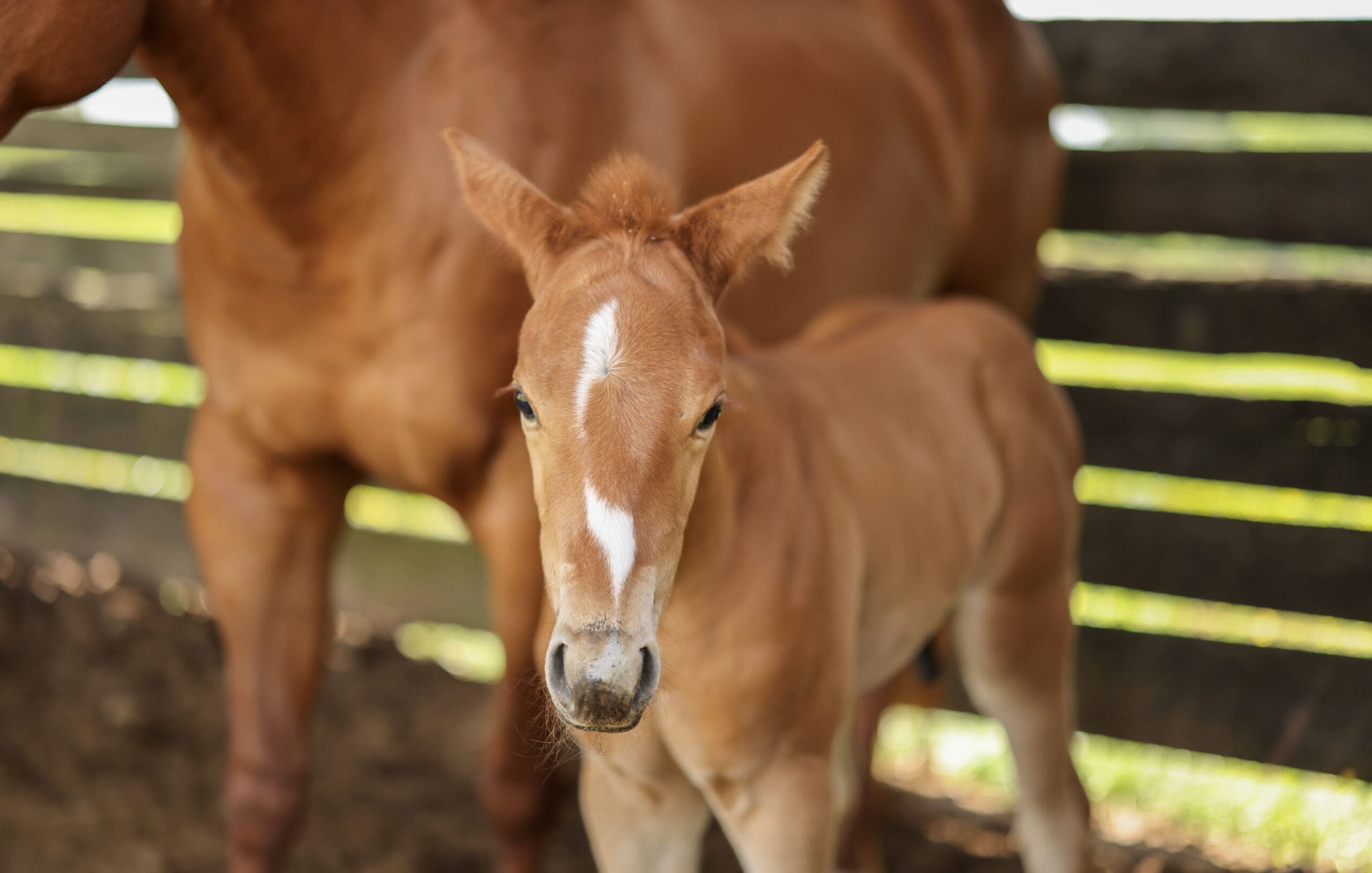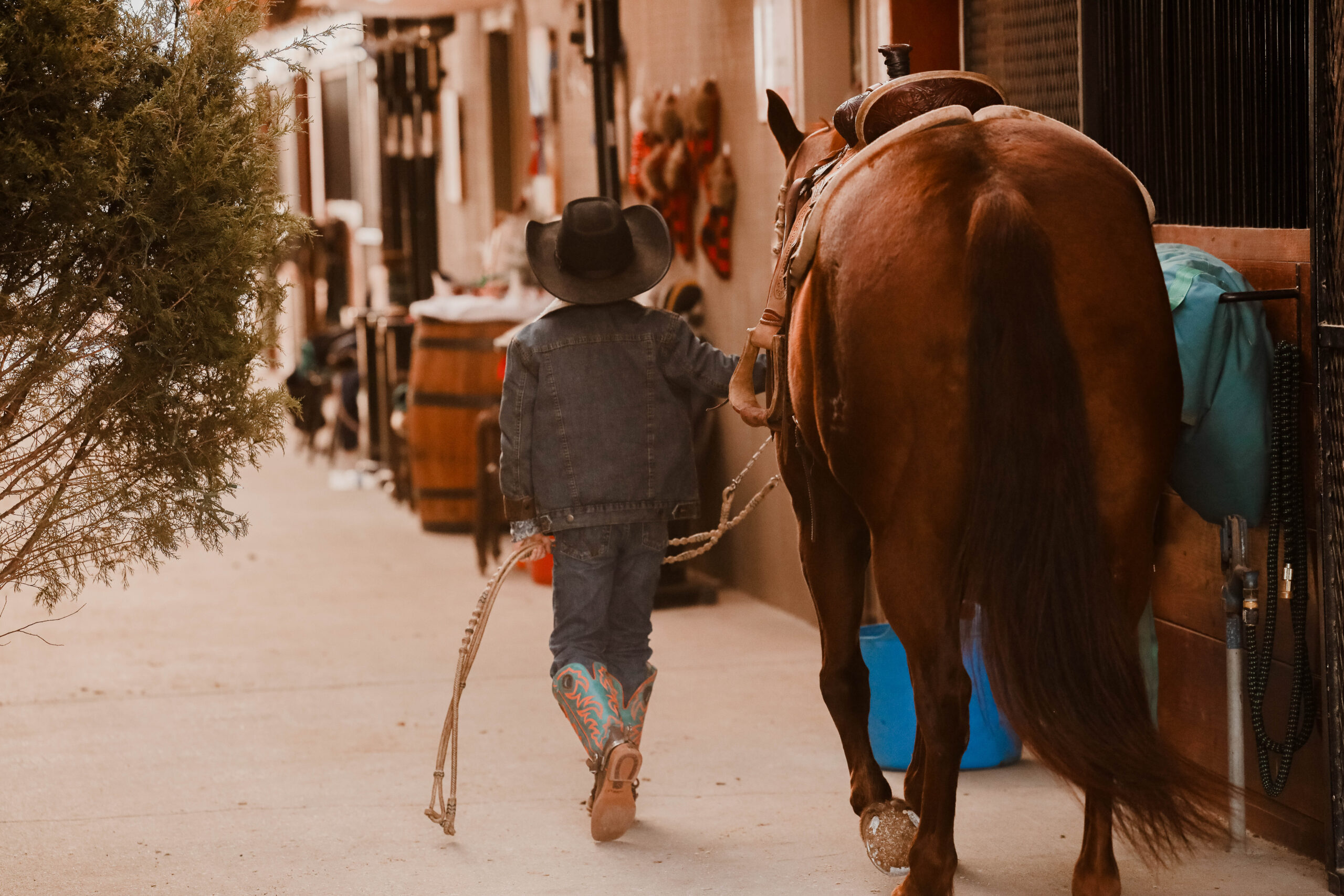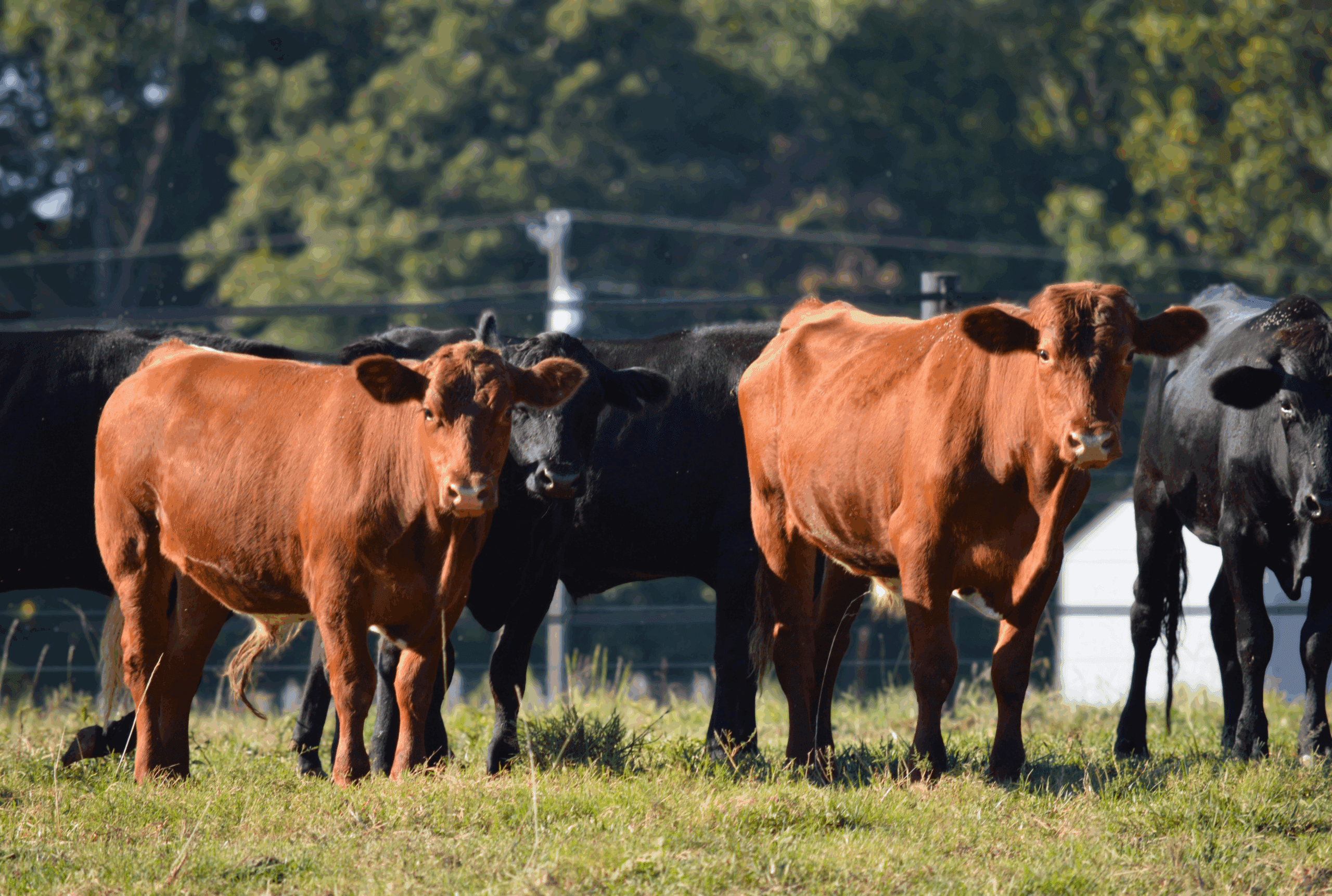ETHICAL, EXCEPTIONAL CATTLE PRODUCTION
After grazing our cattle all spring and summer, we monitor their weight and food intake for 120 days. The cattle eat a mix of grain, corn, silage, and other food. With this feed, the cattle gain about 3 lbs a day and develop healthy marbling in their meat, which tremendously increases the grade of beef. We do all we can to give them healthy lives. Our passion for ethical ranching and quality beef keeps us going.
Prior to entering the feedlot, these cherished creatures receive the same attentive care from professional cattle ranchers who share our values. Our true passion lies in ranching with integrity, dedicating ourselves to every step of the process in order to deliver budget-friendly, top-notch beef.
So go ahead, allow us to make your day and indulge in the unmistakable taste of exceptional beef.

RIBEYE
Taken from the upper part of the back, near the shoulder, the Ribeye is one of the tenderest cuts of beef. It comes from less-worked muscle.
- Low-fuss, no need for fancy seasonings/cooking techniques
- Juicy and tender, thanks to natural marbling and a fatty cap
- Do a quick sear in a cast iron pan and finish with butter
TOP SIRLOIN STEAK
A staple in supermarkets and butcheries, T/S Steak is a flavorful semi-lean cut from near the hip area of the cow. Since it comes from well-exercised muscle, it’s considered a less tender cut of meat and is best enjoyed charred with a red center.
- Lean with big flavor
- Marinate or rub with your favorite seasoning and cook on high heat
TERES MAJOR
This tender, mouthwatering steak comes from the beef chuck primal, which is an entire muscle weighing about a pound. Due to the location and difficulty of removal, many packing houses grind the meat into hamburgers instead of harvesting the cut. Not us! We went the extra mile so you could enjoy this fantastic steak.
- Think Filet Mignon but with more flavor
- Cooks fast, only needs salt and pepper
CHUCK ROAST
Simply put, Chuck Roast is part of the beef’s shoulder.
- The “Do Everything” meat
- A perfect balance of savory beef and buttery fat
- Roast, smoke, or cook slow in high-quality stock or bone broth
GROUND BEEF
- Only quality, all-natural beef
- Dry-aged with the right amount of fat
- Each package contains 1lb of choice Red Angus beef
RANCH STEAK
-
Part of the chuck primal, a muscle near the cow’s shoulder, this is a cut of lean meat with showstopping beef flavor.
- The best-kept secret among meat lovers
- All meat, little-to-no fat, with incredible beefy flavor
- Marinate or add a dash of salt, then cook hot and fast
FILET MIGNON
-
A prized cut that’s taken from the middle of the tenderloin, otherwise known as the short loin. This muscle is found inside the ribcage of the beef. Since it’s not weight-bearing, the connective tissue isn’t toughened by exercise, making its meat extremely tender.
- A high-end dining experience in the comfort of your home
- Lean and delicate, all meat, little-to-no fat
- Sear both sides, then transfer to lower heat to reach the desired doneness
OUTSIDE SKIRT
A cut from the beef’s diaphragm muscle, located between the sixth and twelfth ribs. Unlike the Inside, the Outside Skirt comes from an area that gets less exercise, making it tender. It’s also thicker and more uniform in shape.
- A pitmaster’s dream come true
- Excellent marbling and rich beefy flavor
- Pat the steak dry before searing to create a better crust
1/3 PATTIES
These are exactly what burgers should be.
- Only quality, all-natural beef
- Dry-aged with the perfect amount of fat
- Salt and pepper, cook for 4-5 minutes on each side
TRI-TIP
These are exactly what burgers should be.
- Only quality, all-natural beef
- Dry-aged with the perfect amount of fat
- Salt and pepper, cook for 4-5 minutes on each side
NEW YORK STEAK
A cut that’s taken from the back of the beef where the muscles don’t get much exercise, hence the incredible tenderness.
- Tender with rich, buttery flavor
- Marbling and fat cap set it apart from other steaks
- Add a dash of salt and sear on high heat
FLAT IRON STEAK
-
A newer cut, the Flat Iron is taken from the shoulder of the beef. It’s difficult to harvest but worth the effort. Our butchers separate the meat from the silverskin to create an unforgettable steak.
- Tender cut with ideal texture and taste
- Easy to cook, won’t suffer from extra time on the grill or in a pan
- Best cooked quickly over high heat
DENVER STEAK
-
A cut from a section of the shoulder called the chuck flap. While on the ranch, this muscle gets plenty of exercise, which gives the meat a robust beef flavor. To harvest the Denver Steaks, a method called “seam butchery” is used. Extra work, but worth every second!
- A best-kept secret with delicious marbling and versatility
- Braise, sear, or char on the grill
LONDON BROIL
-
Nowadays the term “London Broil” refers to any thick, lean cut typically from the sirloin or round sections (flank area of the beef). Our London Broil is an inside round cut, which comes from the inside of the rear leg.
- A lean, thick steak perfect for marinating
- Carve against the grain and serve in thin strips
DELMONICO STEAK
People have been debating the definition of this cut for nearly two hundred years. Simply put, Delmonico is a cut of beef from the upper midsection of the cow or steer. Ours comes from the chuck roll.
- Big, thick, and possibly the best steak you’ve ever tasted
- Season with salt and pepper, then sear in a hot, dry skillet
BASEBALL STEAK
Baseball Steak comes from the beef’s sirloin primal, located between the round primal and the loin. It’s cut from the top sirloin.
- A hidden gem with rich, beefy flavor
- Puffs and swells when cooked, forming a dome shape much like a ball
INSIDE SKIRT
A cut from the short plate primal, a section directly under the rib primal. For context, the short plate primal also yields Ground Beef and Short Ribs.
- Perfect for tacos, stir-fry, and other dishes
- Give the cut a quick hot sear, only a couple of minutes per side
BALL TIP
A cut from the top of the beef’s hip bone, an area called the bottom sirloin butt.
- Best when marinated and cooked medium-rare
- Great for making fajitas, stews, and more
FILET TAIL
-
Cut from the Loin Primal, an area below the beef’s backbone, the Filet Tail is a tender steak comparable to Porterhouse and Filet Mignon.
- Incredibly versatile
- Lean with a decadent texture
- Grill, broil, or pan-sear
PICANHA
-
Also known as a rump cover, sirloin cap, and culotte steak, the Picanha is hugely popular in Brazil and comes from the upper rump. Because the rump is not an overworked muscle, the cut of beef has a melt-in-your-mouth texture and rich taste.
- One of the tastiest cuts of beef
- Triangular with a buttery fat cap
- Hugely popular in Brazil
FLANK STEAK
-
Flank Steak comes from the beef’s lower abdominal region. The muscles in this area receive a decent amount of exercise and thus have a robust flavor.
- Not your mama’s Flank Steak
- Robust beefy flavor
- Marinate or season with salt and pepper
CHUCK TAIL FLAP
Simply put, Chuck Tail Flap comes from the beef’s shoulder.
- Your new favorite Roast
- Fine texture and incredible flavor
- Ideal for slow cooking and grilling
HANGER STEAK
If cattle had a six-pack, the Hanger Steak would come from it. Taken from the upper abdomen, from a muscle used to support the beef’s diaphragm, the Hanger is tender because, unlike abs, it doesn’t get much exercise. Robust flavor and cut-with-a-fork texture—that’s a Hanger Steak.
- One-of-a-kind steak
- Incredibly tender and flavorful
- Sear in a pan or on a grill
SIERRA STEAK
Simply put, the Sierra Steak comes from the beef’s shoulder region. This area gets a lot of exercise, which gives the meat a robust flavor.
- Underdog of the beef scene
- Best served rare and sliced against the grain
- Great canvas for your favorite marinade
BAVETTE
Taken from the lower belly of the beef, the Bavette has thicker muscle fibers, which give it a unique and delicious texture. The muscles in the lower belly receive a decent amount of exercise and thus give the Bavette a rich, meaty flavor.
- Like a Skirt Steak but thicker and larger
- Perfect entrée for a crowd
- Shines with seasonings and marinades
KOREAN SHORT RIBS
-
Cut from thin cross-sections of the first 4 to 5 ribs, Korean Short Ribs have the perfect ratio of beef to bone. Grill or slow cook—you can’t go wrong!
- Strips of steak interwoven with buttery fat
- Perfect ratio of beef to bone
- Grill or slow cook—you can’t go wrong!
BRISKET
-
Cut from thin cross-sections of the first 4 to 5 ribs, Korean Short Ribs have the perfect ratio of beef to bone. Grill or slow cook—you can’t go wrong!
- Strips of steak interwoven with buttery fat
- Perfect ratio of beef to bone
- Grill or slow cook—you can’t go wrong!
SIRLOIN TIP ROAST
-
The Sirloin Tip Roast comes from the beef’s hindquarters, adjacent to the sirloin. Although lean, the meat is rich in flavor and becomes deliciously tender when braised, stewed, or oven roasted.
- Simple and sophisticated
- Incredibly versatile
- Braise, stew, or oven-roast
BEEF MYTHS vs. FACTS
- Fresh Meat Is Better than Frozen
- Beef Is Bad for Your Health
- Grass Fed Beef Is Better for You than Grain Fed Beef
- Non-Organic Feedlot Beef Is Full of Hormones
- Non-Organic Feedlot Beef Is Full of Antibiotics
- Organic is Healthier than Conventional Food
- Beef Comes from "Factory Farms"
Fact
There is a age-old debate among meat scientists that ask the question,”Which is better: fresh or frozen?”
According to the Agriculture Department, freezing meat and poultry does not affect the nutritional value. There is some controversy on whether there is a texture difference in frozen vs. fresh due to the ice crystals that are formed in the meat when freezing that may harm the cell structure in the meat. Research has shown that if the meat is vacuum sealed packaged and quick frozen there is very little structure damage to the meat. Our experience has been that there is no difference in the quality.
The other issue: Was the meat aged before being frozen? Since wet or dry aged meat improves tenderness, it must be aged before frozen or it most likely will not be as tender.
Fact
Research shows that a heart healthy diet and lifestyle that includes lean beef, even daily, can lower heart disease risk by reducing levels of total and LDL”bad” cholesterol. About half of the fatty acids found in beef are called monounsaturated fatty acids, the same kind found in olive oil.
A 3-ounce serving of beef provides more than 10 essential nutrients including protein, iron, zinc, and vitamin B12 and B6. One serving of beef contains about half your daily value for protein in around 170 calories on average. Beef is a nutritional powerhouse in a smaller package than other protein foods. Apart from being a great protein source, it would take 8 ounces of cooked chicken breast to consume the same amount of iron in 3 ounces of beef, and it would take 7 times that amount of chicken to get the same serving of zinc!
Research also shows that iron, zinc, and vitamin B found in beef play a essential role in developing and maintaining cognitive ability in children and adults. Protein may help cut the fat. Research has shown exercise is more effective for weight management when paired with a higher-protein diet, and beef provides the amino acids necessary for building and replenishing muscles. Many sources of plant protein do not contain all the amino acids your body needs. Beef supplies more protein and nutrients in significantly fewer calories than plant proteins.
Fact
Contrary to popular belief, all cattle spend the majority of their lives eating grass on pastures. Some may be grass finished, meaning the cattle spend their entire lives on a pasture, whereas other cattle are grain finished, moving from the pasture to a feedlot.
Nutritionally, extended grain feeding can increase the amount of monounsaturated fat, which has cholesterol lowering effects, and likewise, feeding grass longer can influence the amount of omega-3 fatty in beef. However, research has shown both of these beef choices provide same primary nutritional benefits.
All beef provides the same 10 essential nutrients and vitamins and meets the same safety standards. Marketing one type of beef as safer or better for you than the other is misleading and damages the reputation of all beef and the people who raise it.
There are price differences. The beef most Americans consume comes from cattle that spend the majority of the time on grass, then mature in a feedlot prior to processing — a cycle of between 14-16 months. By contrast, the average life span of a grass finished animal is between 20-26 months. Therefore, price-wise, grass-finished beef tends to be more expensive due to the extra time needed to become market-ready and the additional land required to finish them on grass.
Vegetarian and animal rights group regularly make the false accusation that beef is “pumped full of hormones and antibiotics.” They repeat the claim so often that some consumers begin to accept this as a fact.
Fact
Growth promotants are required to go through a comprehensive, multi-step scientific review by the food and drug administration to ensure animal health and human food safety. Approved products are regularly evaluated and must be continually proven safe to remain on the market. Approval of a single growth promotant on average requires 75 studies to demonstrate human food safety, target animal safety and efficacy, environmental safety and user safety, in addition to a number of other requirements set by the FDA.
The FDA has set tolerance on estrogen levels in beef from cattle receiving an estrogen-containing implant. The safe level is 21 billionths of a gram. On average a serving of beef actually has a fraction of that allowable level (.3 billionths of a gram) — nearly 57,000 times lower than what the FDA allows, and thousands of times lower than what our bodies naturally produce, not to mention what is present in many other foods such as soybean oil, cabbage, cereals, and grains.
How Much Estrogen Is in It?
| Product | Amount of Estrogen |
| soybean oil | 168,000 nanograms |
| one birth control pill | 35,000 nanograms |
| wheat germ | 3,000 nanograms |
| ice cream | 2,000 nanograms |
| peas | 520 nanograms |
| potatoes | 225 nanograms |
| milk | 11 nanograms |
| beef from estrogen-treated steer | 1.9 nanograms |
| beef from organic-raised steer | 1.3 nanograms |
Growth promotants generally work by discouraging protein depletion and encouraging protein synthesis in cattle so the can gain more lean muscle from less feed. This typically improves lean muscle tissue 8 percent to 20 percent compared to non-treated cattle.
America’s cattle producers use growth promotants to safely produce more of the lean beef that consumers demand while using fewer resources like land, feed and water.
Vegetarian and animal rights group regularly make the false accusation that beef is “pumped full of hormones and antibiotics.” They repeat the claim so often that some consumers begin to accept this as a fact.
Fact
According to the American Veterinary Medical Association, “Antimicrobials are needed for the relief of pain and suffering in animals caused by bacterial diseases. Many animal diseases cannot be prevented, controlled or treated by changes in management or husbandry practices alone, or with supportive therapy, and therefore require antimicrobial therapy.”
Use of antibiotics for growth promotion in cattle is limited. Lonophores used as feed additives fit the definition of antimicrobials but are not similar to any antibiotics used in human medicine.
The FDA has set residue tolerances and built saftey margins into withdrawl times to assure that beef marketed to consumers is safe.
The Institute of Food Technologists commissioned an international group of scientists to study the issue of antilbiotics in animal agriculture. The panel released its report, “Antimicrobial Resistance: Implications for the Food System,” in June 2006. The report indicates that eliminating antimicrobials from food-animal production may have little positive impact on resistant bacteria of concern to human health. The study found that “Prior human exposure to antibiotics is the greatest factor for acquiring an infection with antibiotic-resistant bacteria.”
Fact
Stanford University researchers say there is little scientific evidence that organic foods offer fewer health risks or are more nutritious than conventional food.
The research results were published in the September 4, 2012 issue of Annals of Internal Medicine.
After examining the studies, researchers found “little significant difference” in health benefits between organic and conventional foods.
“Some believe that organic food is always healthier and more nutritious,” said school instructor Crystal Smith-Spangler in the release. “We were a little surprised that we didn’t find that.”
Dena Bravata, senior author of the paper, said the aim of the research is to educate consumers, not discourage organic purchases.
Fact
97 percent of beef farms and ranches are family-owned. But it takes a community of people — from cow-calf farmers and ranchers to the cattleman, nutritionists, and veterinarians at larger feedyards — working together to bring beef to your plate.
Cattle spend most of their lives grazing pasture, essentially converting forage and grass into protein. Approximately 85 percent of U.S. grazing lands are unsuitable for growing crops. Grazing cattle on this land more than doubles the area that can be used to grow crops.
It’s only the last few months that cattle are in a feedyard, where they have roomy outdoor pens designed with their comfort in mind. Each animal has access to clean water, a balanced diet, and receives daily individual attention and veterinary care. Moving cattle to a feedyard to finish growing actually is the most sustainable way to raise beef.
Raising beef today requires less water, land, and energy, and has a smaller environmental footprint, thanks to continuous improvements by farmers and ranchers. Compared to 1960, there are half as many farmers and ranchers today feeding a U.S. population that has more than doubled.
Farmers and ranchers are honored to be stewards of their animals and believe safe beef comes from healthy cattle and work daily to keep their animals healthy and safe. Sustainability is not a new concept for farmers and ranchers, who are dedicated to leaving their land, business, and communities in better shape for the next generation.
1/4 BEEF SHARE
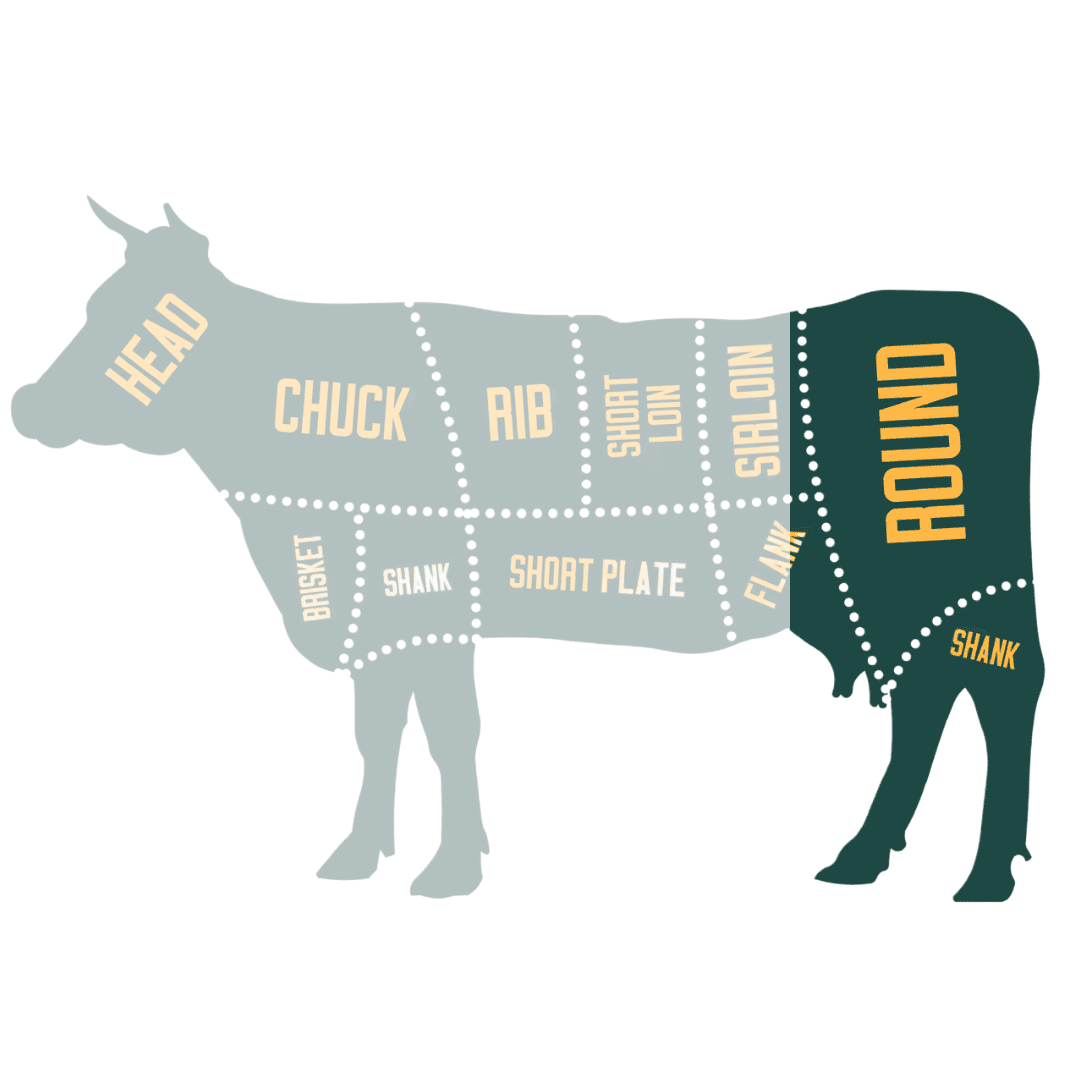
1/2 BEEF SHARE

WHOLE BEEF SHARE
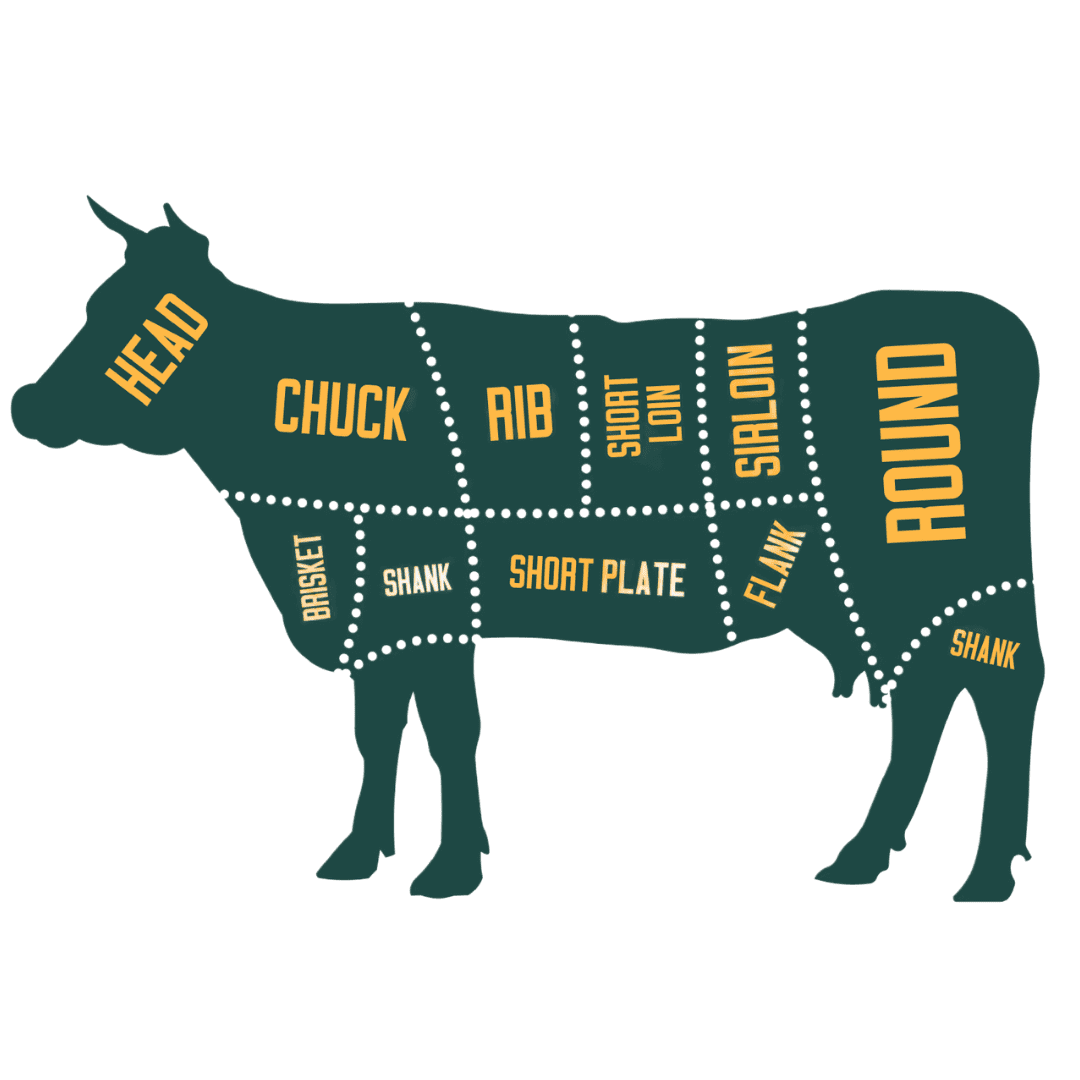
EXPERIENCE EVERYTHING WE OFFER
